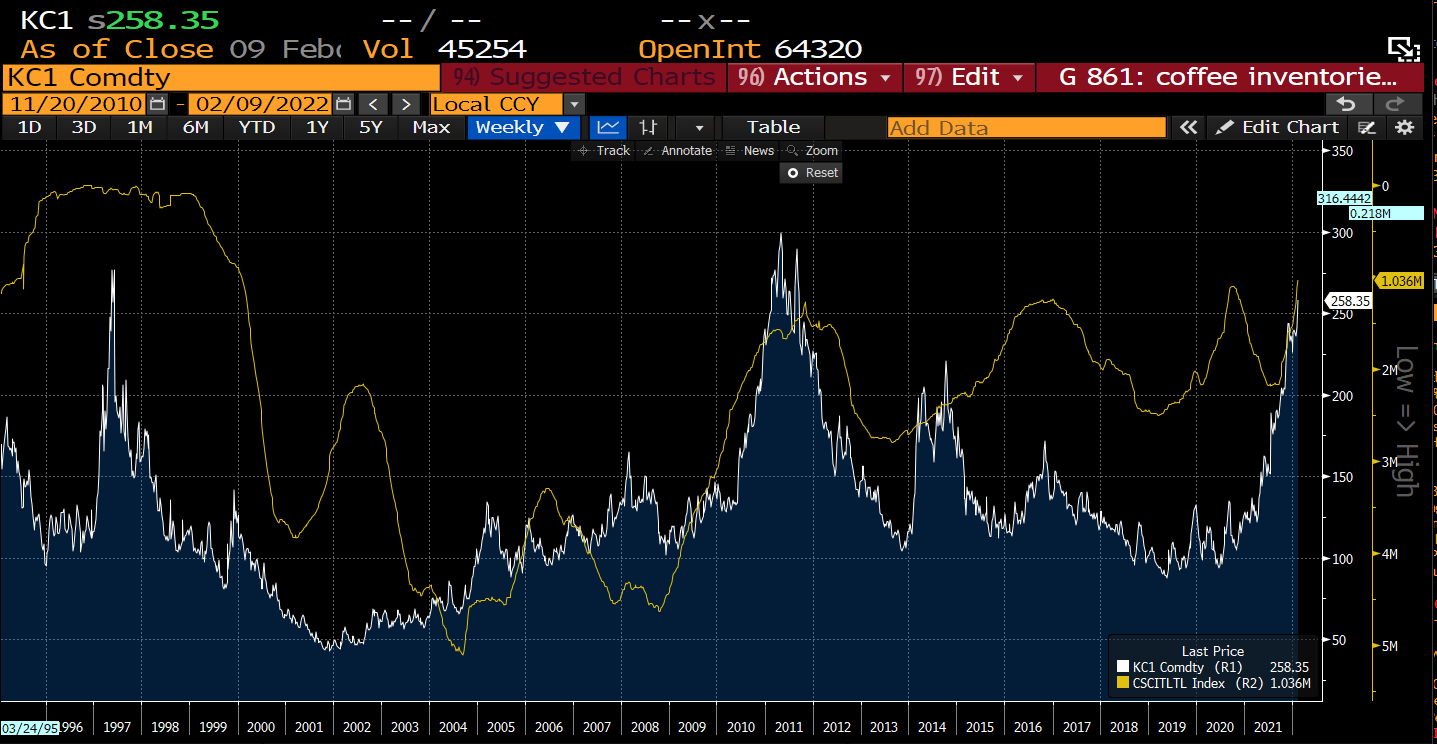Strong drop in stockpiles and supply concerns lift coffee prices
Coffee has finally broken to fresh multi-year highs following a 2-month long sideways move. Coffee trades at the highest level in 10 years. What fuels price gains on this market? Has the fundamental situation changed recently? What's next for prices? Find out in our analysis
Significant drop in inventories
Start investing today or test a free demo
Open real account TRY DEMO Download mobile app Download mobile appCoffee stockpiles on global exchanges have been dropping since late-2018. However, drop accelerated significantly at the beginning of 2020. Inventories dropped to a 10-year low at the beginning of the pandemic. Concerns over coffee shortage waned quickly due to significant drop in demand as a result of Covid-19 restrictions.
Stockpiles began to drop again in 2021. Low temperatures as well as droughts drained coffee stockpiles in Brazil and has significantly limited production potential in this country. Stockpiles started to shrink at an unprecedented rate. Currently inventories sit slightly above 1 million bags, or slightly above 0.5% of global annual demand. Those would last to satisfy just 2 days of consumption.
 Coffee stockpiles drop significantly and there no improvement in sight can be spotted (yellow line, inverted axis). Local lows from late-90 correspond to inventory levels of just 20 thousand bags. Source:Bloomberg
Coffee stockpiles drop significantly and there no improvement in sight can be spotted (yellow line, inverted axis). Local lows from late-90 correspond to inventory levels of just 20 thousand bags. Source:Bloomberg
Lack of change in fundamentals
In spite of emergence of Omicron, life around the world is getting back to normal. It means that demand for coffee from restaurants as well as offices is recovering. However, raw coffee price increases will not have much of an impact on coffee prices for consumers as other costs make up a bulk of coffee price sold in restaurants or cafes.
Meanwhile, the production outlook is unchanged. It may take years to restore lost saplings and weather conditions are harsh for harvest and plantings this season. Deficit on the coffee market may extend into next year
What's next?
Coffee is trading around 15% higher year-to-date. However, rally may not be over yet as fundamentals and BRL situation support further price gains. The Brazilian real has been appreciating, making Brazilian exports less attractive. This may further depress stockpiles of certified coffee on exchanges and put upward pressure on prices. Arabica prices reached the a major resistance zone in the 250-275 area. Next zone to watch out can be found ranging between 300-330 cents per pound. Record highs were reached back in 1977 near 337.5 cents per pound. The last time coffee traded above 300 cents was in 2011.
 Arabica prices broke above the triangle pattern. Textbook range of the breakout from this pattern points to a potential upward move to as high as 277 cents per pound. Stronger BRL is supporting coffee prices. Source: xStation5
Arabica prices broke above the triangle pattern. Textbook range of the breakout from this pattern points to a potential upward move to as high as 277 cents per pound. Stronger BRL is supporting coffee prices. Source: xStation5
Is there a risk?
One cannot rule out that coffee demand will drop in case new restrictions are imposed. However, this is not the base case scenario. Market is unpredictable and coffee is highly overbought - the number of open long positions is very high while the number of short positions is very low. At the same time we can observe a pick-up in the number of positions opened by small speculators (so-called "dumb money), what is sometimes treated as a contrarian signal.